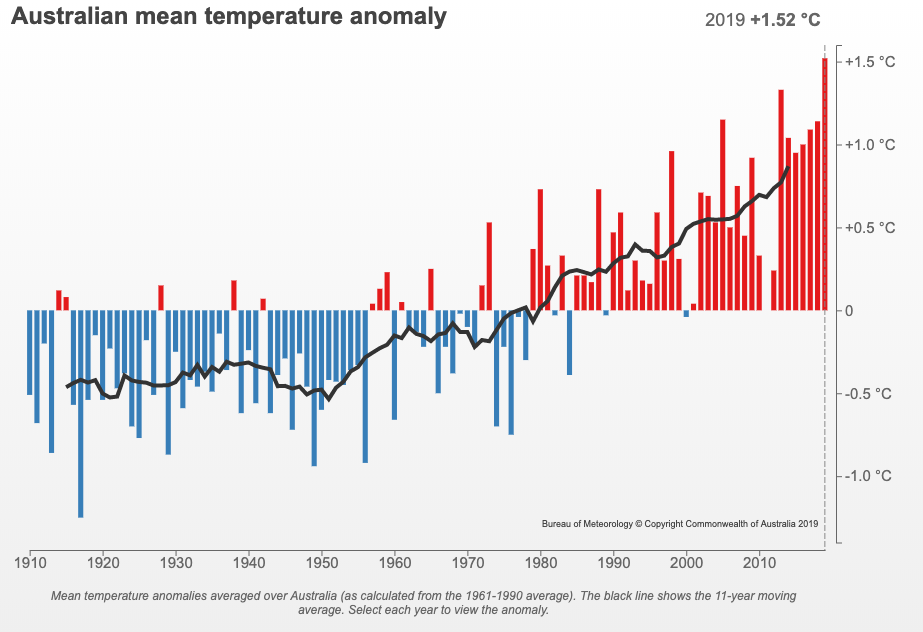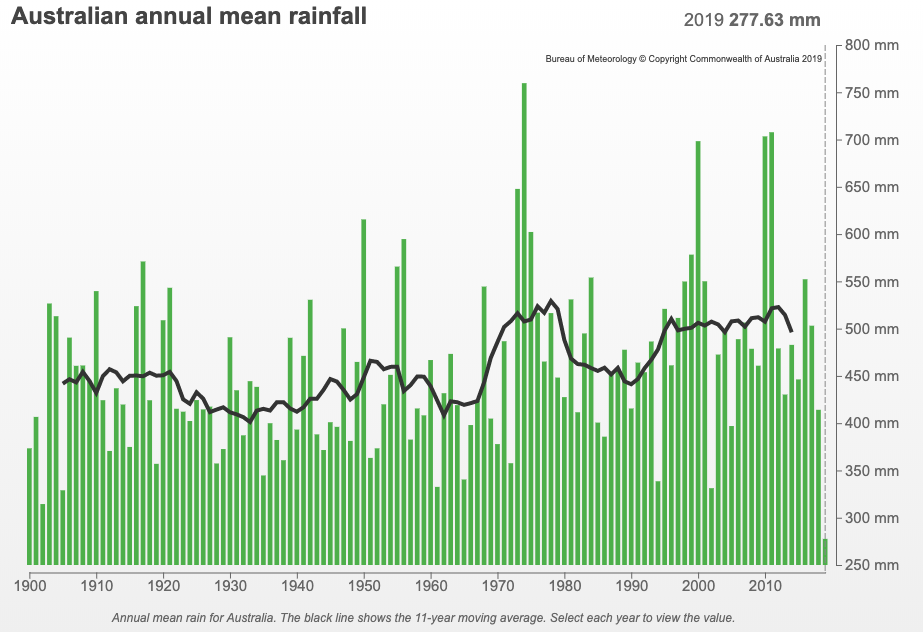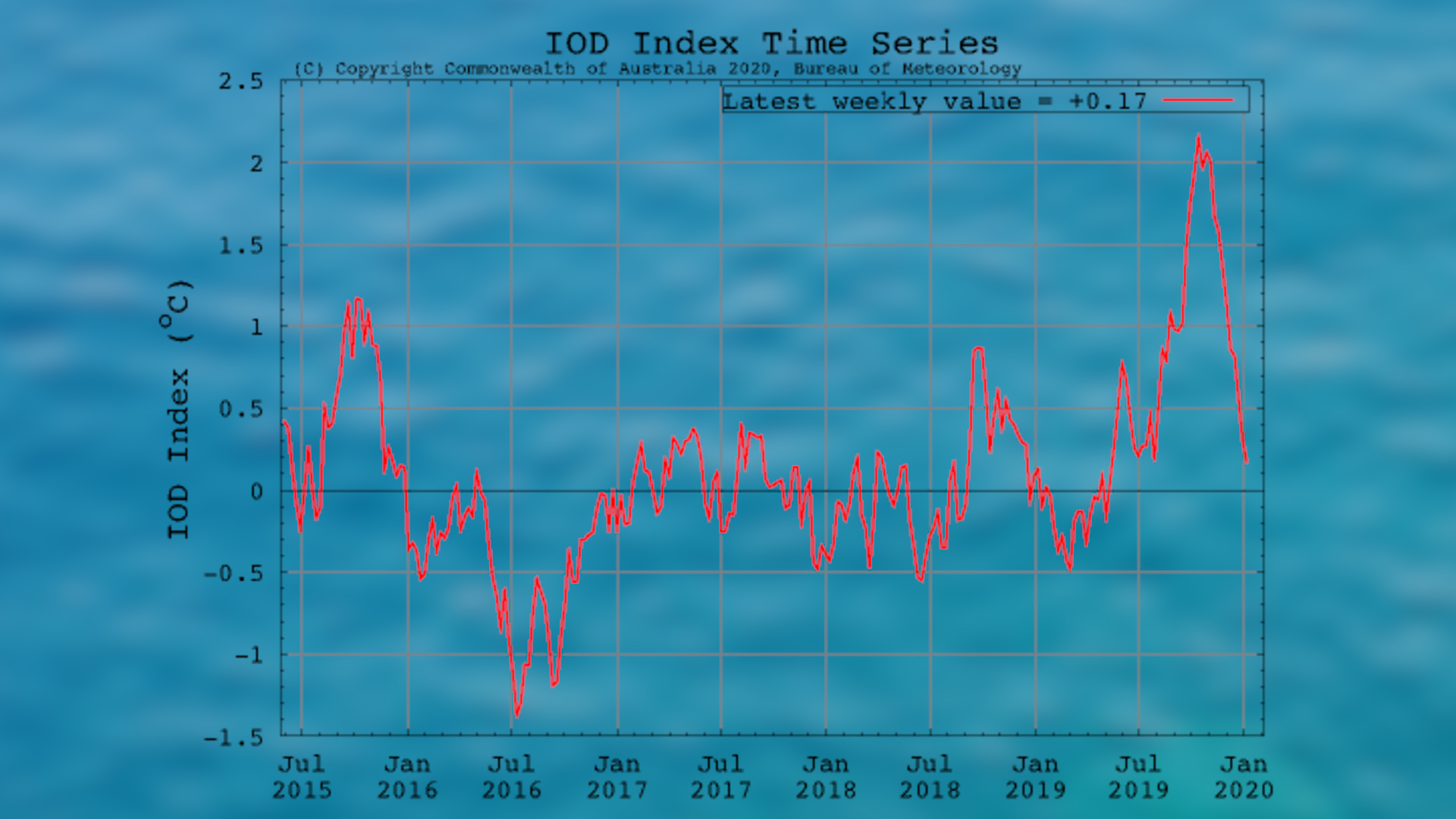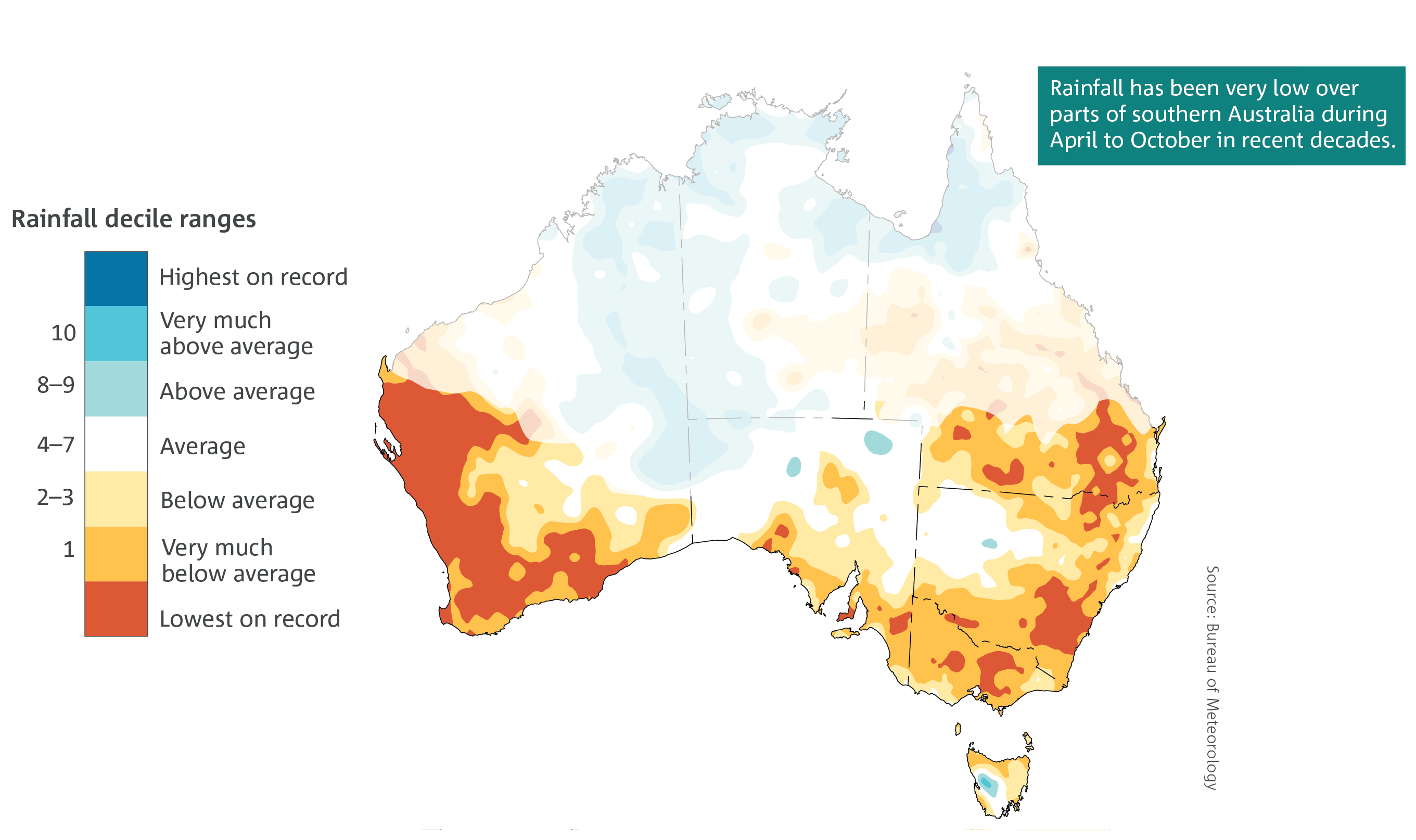Climate statement confirms 2019 as record warm, dry year for Australia
Australia's annual climate statement was released on Thursday, confirming that 2019 was the country's warmest and driest year on record.
The Bureau of Meteorology's report on Australia's climate in 2019 shows that no other year has been this warm or dry since continuous reliable records began in the early 1900's.

The country's annual mean temperature in 2019 was 1.52 degrees above the 1961-1990 average, beating the old record of 1.33ºC above average from 2013. Official national temperature records date back to 1910.

Image: Australia's annual mean temperature anomalies from 1910 to 2019, showing 2019 as Australia's warmest year on record. Source: Bureau of Meteorology
Australia's annual rainfall total was 277.6mm, which is 40 percent below the 1961-1990 average (465.2mm) and below the previous record of 314.46mm from 1902, during the Federation Drought. Australia's rainfall records go back to 1900.

Image: Australia's annual rainfall from 1910 to 2019, showing 2019 as Australia's driest year on record. Source: Bureau of Meteorology
There were three main reasons Australia had such an exceptionally warm and dry year during 2019.
Firstly, a strong and persistent positive Indian Ocean Dipole restricted the amount of moisture being transported over Australia from the west. This was one of the strongest positive Indian Ocean Dipole episodes in recorded history and the overall pattern persisted from late May until the end of the year.

Image: Weekly Indian Ocean Dipole index values from the last several years, showing the prolonged and strong positive phase during 2019. Source: Bureau of Meteorology
Another dominant influence on Australia's weather in 2019 was a rare Sudden Stratospheric Warming episode that occurred high above the South Pole from late August. This phenomenon caused weather systems over Australia to shift further north than usual from late October to December, resulting in reduced rain and elevated temperatures over parts of eastern Australia in spring and early summer.
The third feature influencing Australia's weather during 2019 was the underlying effect of long-term trends in temperature and rainfall that are resulting from climate change.
Australia's average air temperature has warmed by over one degree since 1910. There has also been a reduction in autumn and winter rainfall over parts of southwestern and southeastern Australia in recent decades.

Image: Rain deciles for the April to October period during the 20 years from 1999 to 2018, showing below-average rain in souteastern and southwestern Australia. This reflects a mid-year drying trend in recent decades for these parts of the country. Source: Bureau of Meteorology.
Research also suggests that positive Indian Ocean Dipole events, like the one we saw in 2019, are likely to occur more frequently as global temperatures rise.
The exceptionally warm and dry climate of 2019 exacerbated drought conditions in large parts of Australia and provided the fuel for devastating bushfires in southeastern Australia.